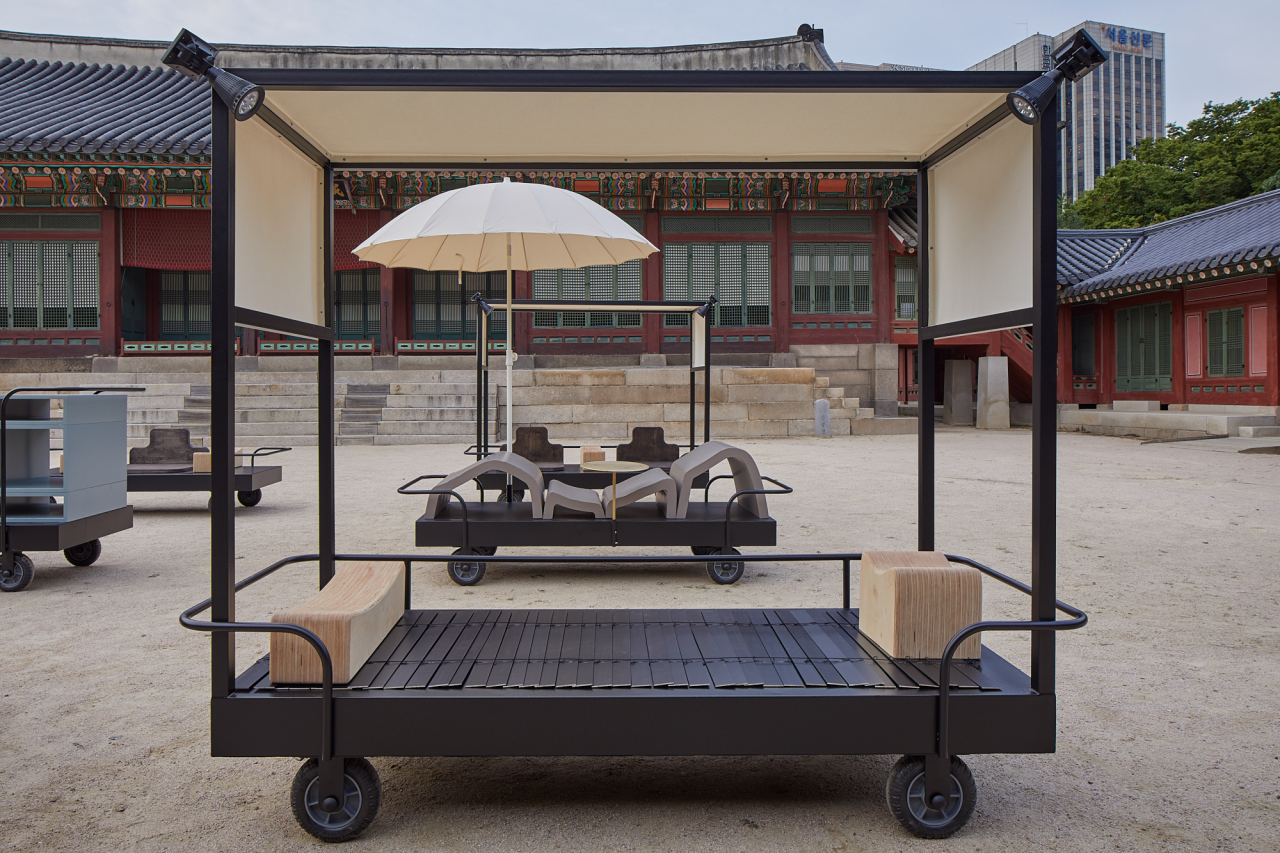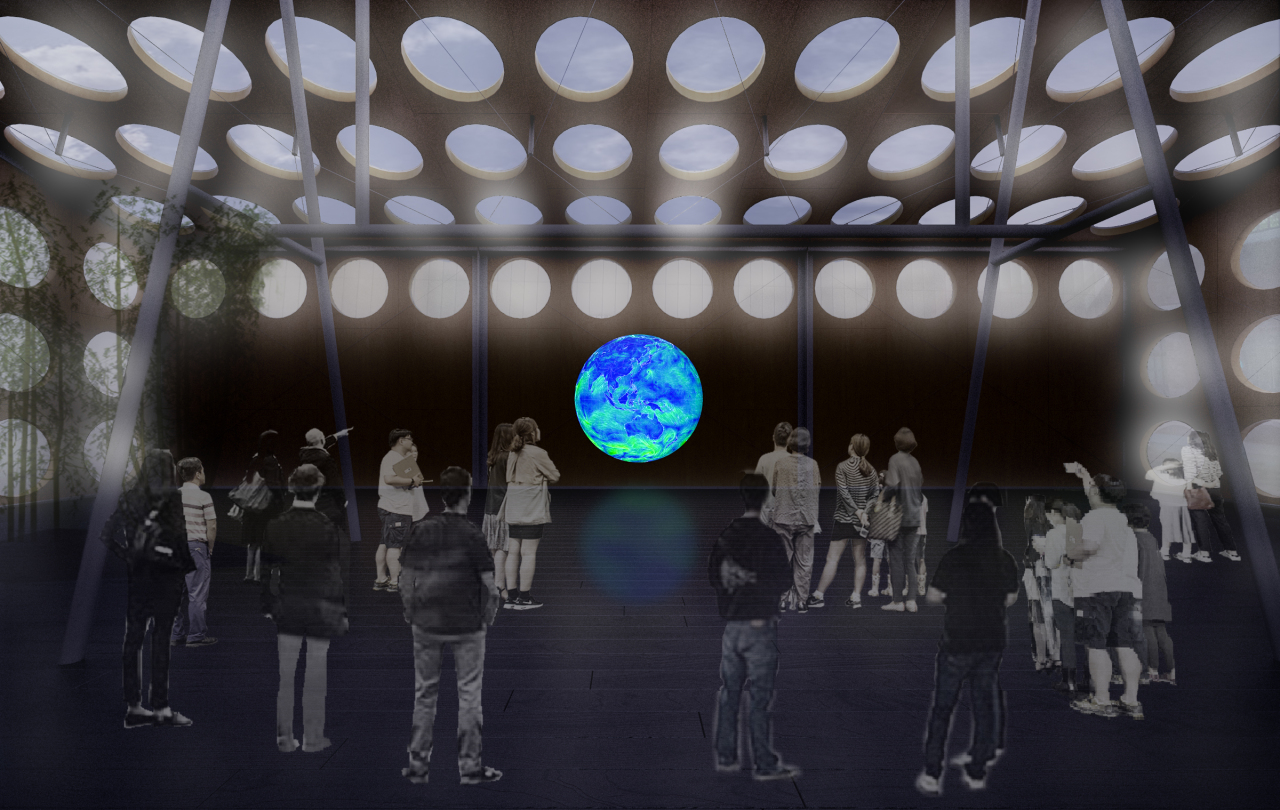MMCA’s Deoksugung outdoor project remembers Gojong, last Joseon king
By Shim Woo-hyunPublished : Sept. 4, 2019 - 17:45
The National Museum of Modern and Contemporary Art, Korea kicks off an outdoor exhibition in the area around Deoksugung and its main branch in Samcheong-dong on Thursday.
“Architecture and Heritage: Unearthing Future” features works by architects from five architectural firms based in Asia -- Space Popular, CL3, Bureau Spectacular, OBBA and Obra Architects.
“Architecture and Heritage: Unearthing Future” features works by architects from five architectural firms based in Asia -- Space Popular, CL3, Bureau Spectacular, OBBA and Obra Architects.

It celebrates the 100th anniversary of the March 1 Independence Movement and the death of Emperor Gojong, the last king of the Joseon Kingdom, who undertook reform aimed at modernizing the country
Four of the five works are on show at the Deoksugung area.
In the middle of Gwangmyeongmun, the gate to Hamnyeongjeon, is “Gate of Bright Lights,” a video installation by Lara Lesmes and Fredrik Hellberg from Thai firm Space Popular.
In the courtyard of Hamnyeongjeon, Emperor Gojong’s bedchamber, is “Furniture for an Emperor in Transition” by William Lim of Hong Kong-based CL3.
Lim, who participated in the 2006 and 2010 Venice Architecture Biennale, has installed six movable furniture combining images of Korea’s traditional palanquin and the contours of 20th century Western furniture designs. Visitors are welcome to sit and use Lim’s furniture.
Meanwhile, OBBA architect Lee So-jung and Kwak Sang-joon, the winner of the Culture Ministry’s 2018 Young Artist Award, have displayed “Daehan Yeonhyang” in front of Junghwajeon, the main hall of the palace.
The two Korean architects have recreated a scene from the last royal banquet of the Daehan Empire, one depicted in a folding screen from 1902.
The tree-like installations made using dichroic films were designed to allow the wind to reflect and scatter light and colors.
Installed in the garden near Seokjojeon is “Future Archeologist” by Bureau Spectacular’s Jimenez Lai, a Taiwanese-Canadian architect who represented Taiwan at the 14th Venice Architecture Biennale.
When completed on Monday, the metal structure supported by pilotis will be 5.6 meters in height. It will allow visitors to stand high above the ground and imagine themselves as archeologists in the future excavating a site that has been buried for over thousands of years.
Meanwhile, a pavilion measuring 120 square meters in area is installed at the MMCA Seoul Museum Madang, an open courtyard space that faces Gyeongbokgung, another Joseon-era palace.
The pavilion by Jenifer Lee and Pablo Castro of Obra Architects, titled “Perpetual Spring,” uses an artificial climate-correcting machine, solar panels and ondol -- Korea’s traditional floor heating system -- to keep the outdoor space warm enough to house various activities throughout the year.

The construction of the pavilion by Obra Architects, the winner of the 2006 MoMA PS1 Young Architects Program, will be completed by Wednesday.
“Architecture and Heritage: Unearthing Future” runs through April 5, 2020.
By Shim Woo-hyun (ws@heraldcorp.com)







![[KH Explains] How should Korea adjust its trade defenses against Chinese EVs?](http://res.heraldm.com/phpwas/restmb_idxmake.php?idx=644&simg=/content/image/2024/04/15/20240415050562_0.jpg&u=20240415144419)












![[Today’s K-pop] Stray Kids to return soon: report](http://res.heraldm.com/phpwas/restmb_idxmake.php?idx=642&simg=/content/image/2024/04/16/20240416050713_0.jpg&u=)